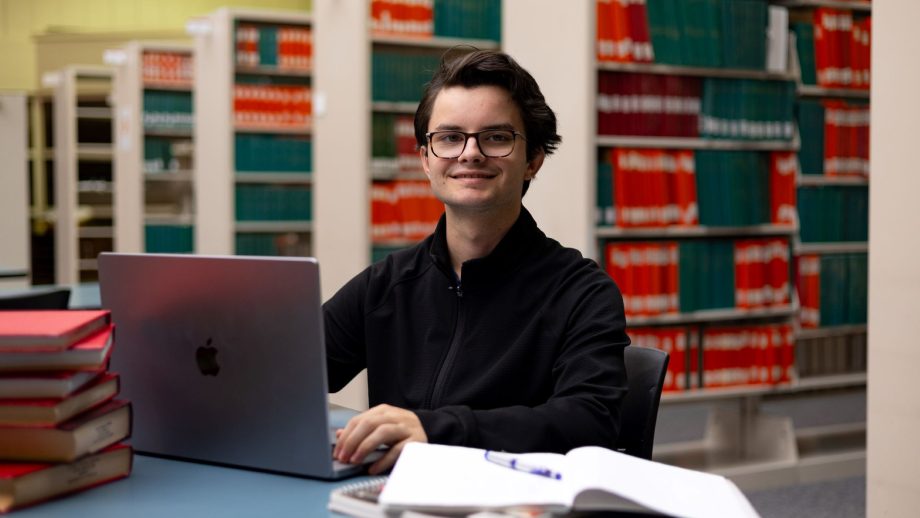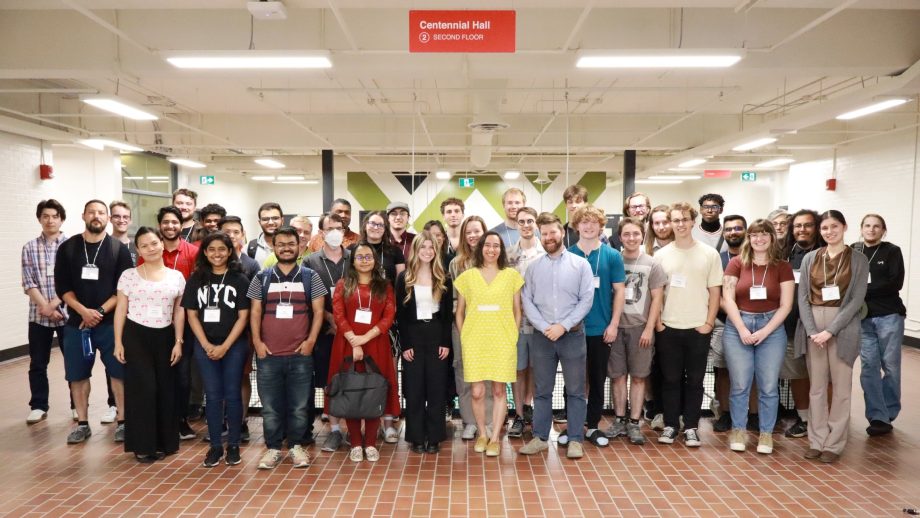With the help of a Discovery Grant from the Natural Sciences and Engineering Research Council of Canada (NSERC), The University of Winnipeg’s Dr. Evan McDonough is looking to answer a question that has long puzzled the scientific community: what is dark matter?
McDonough, an assistant professor in the Physics department whose specialization is the intersection of cosmology and particle physics, specifically the earliest moments of the universe, is part of a young generation of people attempting to find new solutions to this old problem. McDonough hopes to use experience, expertise, and skills honed as a research scientist at Brown University, the Massachusetts Institute of Technology (MIT), and the University of Chicago and apply them in a way that will allow for the kind of discovery that eluded prior generations.
“One of the fascinating open questions is the nature of dark matter: Is it a conventional particle like the Higgs boson? Or is it maybe a fluid, itself comprised of an astronomical number of nearly massless (`ultralight’) particles? Or on the other hand, is dark matter in fact a population of black holes?” McDonough said. “To answer these questions is to identify the nature of dark matter. I’m hopeful we can do that with the next generation experiments, as they come online and start taking data in the coming years.”
McDonough, a prolific researcher and publisher in his short time at UWinnipeg, has recently completed papers on what he referred to as these “two separate streams” of dark matter. Primordial Black Holes from Multifield Inflation with Nonminimal Couplings, written in collaboration with researchers at MIT, focuses on extremely heavy dark matter candidate, which is the possibility of dark matter “particle” is in fact a black hole, while Ultra-Light Pion and Baryon WIMPzilla Dark Matter concerns itself with what is referred to ultralight dark regime, where the particles collectively behave as a fluid. But this research only begins to scratch the surface of what McDonough wants to accomplish.
“We know that there’s five times more matter in our universe than we can actually see,” he said. “If you look at the stars and you count up the amount of mass that should be in our universe based upon that, you get only a small fraction of the mass that we know must be there – to a fantastic degree of accuracy and precision from many different experiments. The task at hand is to learn more about dark matter than its mere existence – a great place to start is seeking out the nature of dark matter; as a particle or something more exotic.”
In the near future, it’s McDonough’s goal not to focus his efforts on one specific model pertaining to dark matter but understand the theory of classes of models and provide sweeping insight into the nature of dark matter.
“Is dark matter a black hole? This is a question we should be able to address without recourse to one specific model realization. Is dark matter an extremely light particle that behaves as a fluid? This too makes generic predictions, in addition to the features any one particular model,’” he explained. “My goal is to develop the theory of the extremes and to unify predictions of specific models. The breadth and depth of research here at UWinnipeg and in the province of Manitoba make this the perfect place for me to do so.”





